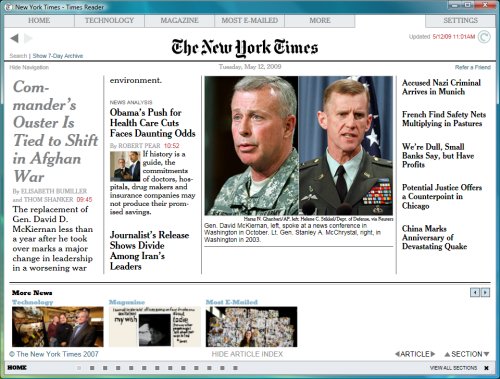Apple says its new Safari 4 is the world’s fastest browser:
Still the world’s fastest web browser, Safari outraces Firefox, Internet Explorer, and Chrome. On even the most demanding Web 2.0 applications, Safari delivers blazingly fast performance thanks to the industry’s most advanced rendering technologies.
Using the new Nitro Engine, for example, Safari executes JavaScript nearly 8 times faster than Internet Explorer 8 and more than 4 times faster than Firefox 3 based on performance in leading industry benchmark tests: iBench and SunSpider.
In addition to superior JavaScript performance, Safari offers top-flight HTML performance — the best on any platform — loading pages 3 times faster than Internet Explorer 8 and Firefox 3.
Adrian Kingsley-Hughes at zdnet has tested Safari vs Chrome and IE8, and says Apple’s claims do not stand up to scrutiny. In his tests, Chrome is faster. Unfortunately, he used a different build of Chrome than Apple – 2.0.172.30 vs 2.0.172.28. In addition, he is using a quad core processor, Intel’s QX9770, whereas Apple is using an iMac with a Core 2 Duo processor. Chrome is still work in progress on the Mac, so the results for this are on Vista.
ZDNet’s results certainly cast doubt on Apple’s figures. On the SunSpider JavaScript test, used by both, Apple quotes 609.07ms for Safari vs 870.00ms for Chrome, whereas zdnet has 808.8ms for Chrome and 846.2ms for Safari.
That said, JavaScript performance is not the same as browser performance. If you read Apple’s claim carefully, it talks about rendering technologies and HTML performance as well as the JavaScript engine. Focusing exclusively on JavaScript would be like assessing the performance of Windows vs Mac, for example, simply by timing some number-crunching operations.
In practice, what users care about is the time it takes to load a page and its responsiveness thereafter. Apple claims its best advantage over Chrome in i-Bench HTML, claiming that Chrome takes 40% longer. Unfortunately I cannot currently find the test which Apple used, but I’m presuming it tests DOM rendering speed rather than just non-visual JavaScript performance; an earlier i-Bench HTML used actual web sites.
Bottom line: I don’t trust Apple’s figures either, but I’m retaining an open mind. You need to compare like with like, and not focus exclusively on JavaScript, to test browser performance.
Update: Blogger Luca Filigheddu backs up Apple’s claims with some real-world tests.




